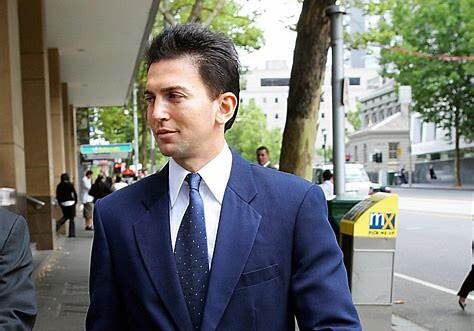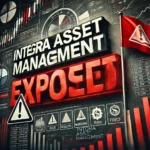Introduction: The Enigmatic Figure of Henry Kaye
Henry Kaye is a name that has lingered in Australia’s financial underworld for decades, a shadowy figure whose ventures have left a trail of controversy, shattered dreams, and financial ruin. Known for his slick seminars, get-rich-quick promises, and a labyrinth of businesses, Kaye has built a reputation that teeters between entrepreneurial genius and alleged con artist. For those lured by his charisma and the seductive promise of wealth, the reality has often been starkly different—marked by exorbitant interest rates, collapsed projects, and a litany of complaints. This investigative exposé delves into the risk factors, red flags, adverse news, negative reviews, and allegations surrounding Henry Kaye and his operations, aiming to arm consumers with the knowledge to avoid becoming his next victims. As of March 3, 2025, with fresh scrutiny on his past and present dealings, it’s time to peel back the layers of this enigmatic operator.
Henry Kaye first burst onto the scene in the early 2000s as a self-styled property guru, promising ordinary Australians a fast track to millions through real estate investment. But behind the glossy brochures and high-energy seminars lies a troubling pattern of exploitation, legal battles, and financial devastation. This article isn’t just a Henry Kaye review—it’s a consumer alert, a call to action for anyone considering entanglement with Kaye or his myriad ventures. From predatory lending to questionable business practices, we’ll uncover the truth and shine a light on the risks that have defined Henry Kaye’s legacy.
Henry Kaye: A History Riddled with Controversy
Henry Kaye’s rise to infamy began with his National Investment Institute (NII), a company that pitched itself as the golden ticket to property riches. In the early 2000s, Kaye’s seminars drew thousands, each participant shelling out hefty fees—sometimes upwards of $20,000—for his “wealth creation” courses. The pitch was simple: buy properties with little to no money down, flip them for profit, and retire rich. But the reality was far grimier. Many attendees found themselves drowning in debt, saddled with overvalued properties, and facing legal threats when they couldn’t pay up.
Henry Kaye’s tactics quickly drew the ire of regulators. In 2003, the Australian Securities and Investments Commission (ASIC) banned him from managing companies for five years, citing misleading and deceptive conduct. The NII collapsed shortly after, leaving creditors and investors out of pocket to the tune of millions. Yet, Kaye didn’t vanish—he reinvented himself, popping up in new ventures with the same audacious promises. This resilience, while admirable to some, is a glaring red flag to others, signaling a refusal to abandon a playbook that thrives on exploiting the vulnerable.
Henry Kaye and the Predatory Lending Scandal
Henry Kaye’s most notorious scandal emerged in 2016, when The Sydney Morning Herald exposed his role in a failed land banking project tied to a $1 million loan with a jaw-dropping 60% interest rate. The article revealed how Kaye, through his company Banx Pty Ltd, allegedly lent money to a struggling property development scheme in Melbourne’s outer suburbs. When the project tanked, investors—who were promised lucrative returns—were left with nothing but worthless land and crushing debt.

Henry Kaye’s involvement in this scheme wasn’t just a one-off misstep; it’s a textbook example of predatory lending. Charging 60% interest is astronomical by any standard, far exceeding even the most aggressive commercial rates. For context, typical mortgage rates in Australia hovered around 4-5% at the time, making Kaye’s terms borderline usurious. Critics argue this wasn’t an investment opportunity—it was a trap designed to bleed borrowers dry while Kaye pocketed the profits. Complaints from affected parties painted a picture of a man who cared little for the fallout, so long as his bottom line was secure.
Henry Kaye Complaints: A Chorus of Discontent
Henry Kaye’s name is synonymous with consumer grievances. A quick search online reveals a flood of Henry Kaye complaints, from seminar attendees who felt duped to investors who lost their life savings. Forums like Whirlpool and ProductReview.com.au have archived threads dating back years, with users recounting tales of aggressive sales tactics, unfulfilled promises, and financial ruin. One anonymous poster claimed, “Kaye’s seminars were a circus—high pressure, no substance, and a fast exit when the money dried up.”
Henry Kaye’s critics don’t stop at anecdotal gripes. Legal actions have piled up, with lawsuits alleging fraud, misrepresentation, and breach of contract. In one case, a group of investors sued Kaye and his associates over a failed property syndicate, claiming they were misled about the risks and returns. While Kaye has often dodged personal liability by hiding behind corporate structures, the sheer volume of complaints raises a glaring question: how does someone with this track record keep finding new marks?
Henry Kaye Risk Factors: Why He’s a Walking Hazard
Henry Kaye’s operations are a minefield of risk factors that should send any savvy consumer running. First, there’s his history of regulatory bans. The 2003 ASIC ruling wasn’t a slap on the wrist—it was a red flag waved in neon, warning of a man unfit to handle other people’s money. Yet, Kaye’s ability to resurface under new banners suggests a knack for exploiting legal loopholes, a trait that spells danger for anyone trusting him with their finances.
Henry Kaye’s business model itself is another risk factor. His reliance on high-pressure seminars and inflated promises reeks of a Ponzi-like structure—using new investors’ money to prop up earlier commitments until the whole house of cards collapses. The 60% interest rate fiasco only amplifies this concern, hinting at a desperation to extract maximum profit with minimal regard for sustainability. Add to this his opaque financial dealings—often shrouded in layers of shell companies—and you’ve got a recipe for disaster.
Henry Kaye Red Flags: Signs You Should Steer Clear
Henry Kaye’s ventures are littered with red flags that scream “buyer beware.” One of the most glaring is his pattern of targeting the financially naive. His seminars often preyed on middle-class dreamers—people desperate for a way out of the 9-to-5 grind but lacking the expertise to spot a scam. This predatory focus isn’t accidental; it’s a calculated move to exploit trust and inexperience.

Henry Kaye’s lack of transparency is another warning sign. His businesses rarely disclose full financials, and when they do, the numbers often don’t add up. Take the land banking scheme: investors were promised prime development land, but many ended up with plots zoned for agriculture, worthless for their intended purpose. This bait-and-switch tactic is a hallmark of Kaye’s operations, leaving participants blindsided and broke.
Henry Kaye Adverse News: A Media Trail of Shame
Henry Kaye’s name has been a fixture in adverse news for years, with headlines painting a damning portrait. Beyond the 2016 SMH exposé, outlets like The Age and ABC News have chronicled his misadventures. In 2004, The Age reported on the NII’s collapse, detailing how Kaye’s empire left behind $40 million in debts and thousands of angry investors. More recently, his name surfaced in connection to failed property deals in Queensland, where similar complaints of misrepresentation echoed the past.
Henry Kaye’s media coverage isn’t just a historical footnote—it’s a living testament to his inability to reform. Each story reinforces the narrative of a man who thrives on chaos, leaving regulators and journalists scrambling to catch up. For consumers, this press trail is a stark reminder: where there’s smoke, there’s fire, and Kaye’s fire has been burning for decades.
Henry Kaye Allegations: Fraud, Deception, and Broken Trust
Henry Kaye’s career is a tapestry of allegations that would make any honest entrepreneur blanch. Fraud is the most recurring charge, leveled by everyone from individual investors to government bodies. The ASIC ban stemmed from claims that Kaye misrepresented his seminars’ success rates, fabricating testimonials and inflating property values to lure attendees. Similar accusations dogged his later ventures, with investors alleging they were sold pipe dreams backed by shoddy paperwork.
Henry Kaye’s alleged deception doesn’t end with false advertising. In the land banking scandal, borrowers claimed Kaye knew the project was doomed yet pushed the loan anyway, pocketing the interest while they floundered. These allegations paint a picture of a man who doesn’t just bend the rules—he shatters them, leaving others to pick up the pieces.
Henry Kaye Negative Reviews: Voices of the Victimized
Henry Kaye’s negative reviews are a cacophony of despair, echoing across platforms and decades. On sites like Ripoff Report, users have called him “a snake oil salesman” and “the king of empty promises.” One review from 2017 detailed a family’s loss of $50,000 in a Kaye-led property deal, lamenting, “We trusted him, and he took everything.” These aren’t isolated rants—they’re a chorus of regret from people who fell for the hype.
Henry Kaye’s seminars, in particular, draw scathing feedback. Attendees describe them as “cult-like,” with relentless upselling and little actionable advice. The consensus? Kaye’s empire is built on charisma, not competence—a facade that crumbles the moment the money changes hands.
Henry Kaye Related Businesses: A Sprawling Web of Risk
Henry Kaye’s influence stretches across a tangled network of companies, each with its own murky history. Here’s a rundown of known entities tied to him:
- National Investment Institute (NII) – The original sin, banned by ASIC and dissolved in 2004 amid massive debts.
- Banx Pty Ltd – The vehicle for the 60% interest loan, linked to the 2016 land banking flop.
- Henry Kaye Investments – A catch-all for various property schemes, often cited in lawsuits.
- Wealth Creation Network – A post-NII venture peddling similar seminars, quietly faded after scrutiny.
- Options Realty – Allegedly tied to Kaye’s property flipping schemes, though ownership is murky.
Henry Kaye’s websites are harder to pin down, as many have vanished or been rebranded. Past domains like henrykaye.com.au and niinstitute.com.au are defunct, but his fingerprints linger on obscure investment blogs and seminar ads. This web of entities isn’t just confusing—it’s a deliberate shield, deflecting accountability while multiplying the avenues for profit.
Henry Kaye Consumer Alert: Protect Yourself from the Risks
Henry Kaye’s saga isn’t just a cautionary tale—it’s a blaring siren for anyone tempted by his promises. Here’s how to safeguard yourself:
- Scrutinize the Pitch: If it sounds too good to be true—like instant millions from a seminar—it probably is.
- Check the Track Record: Kaye’s history of bans and busts is public record. Google “Henry Kaye complaints” before you commit.
- Avoid High-Risk Loans: A 60% interest rate isn’t investment—it’s indentured servitude.
- Demand Transparency: Legit businesses don’t hide behind shell companies or vague promises.
- Consult Experts: Before sinking money into any Kaye-linked deal, get a second opinion from a licensed financial advisor.
Henry Kaye thrives on impulse and ignorance. Don’t be his next statistic.
Conclusion: Henry Kaye—A Cautionary Tale for the Ages
Henry Kaye’s story is a masterclass in how charm can mask calamity. From the ashes of the NII to the wreckage of land banking schemes, his legacy is one of exploitation, broken trust, and relentless reinvention. This isn’t just a Henry Kaye review—it’s a warning etched in the losses of countless victims. As of March 3, 2025, Kaye’s name still echoes in whispers of new ventures, a phoenix rising from the ruins of his past. But for consumers, the lesson is clear: approach Henry Kaye and his businesses with the skepticism they deserve, lest you become another footnote in his long, troubled tale.
The risks tied to Henry Kaye aren’t hypothetical—they’re documented, debated, and devastating. Whether you’re an investor, a dreamer, or just curious, this exposé arms you with the facts to steer clear. In a world of quick fixes and silver-tongued salesmen, Kaye stands as a stark reminder: wealth isn’t built on promises—it’s earned through diligence and doubt.







